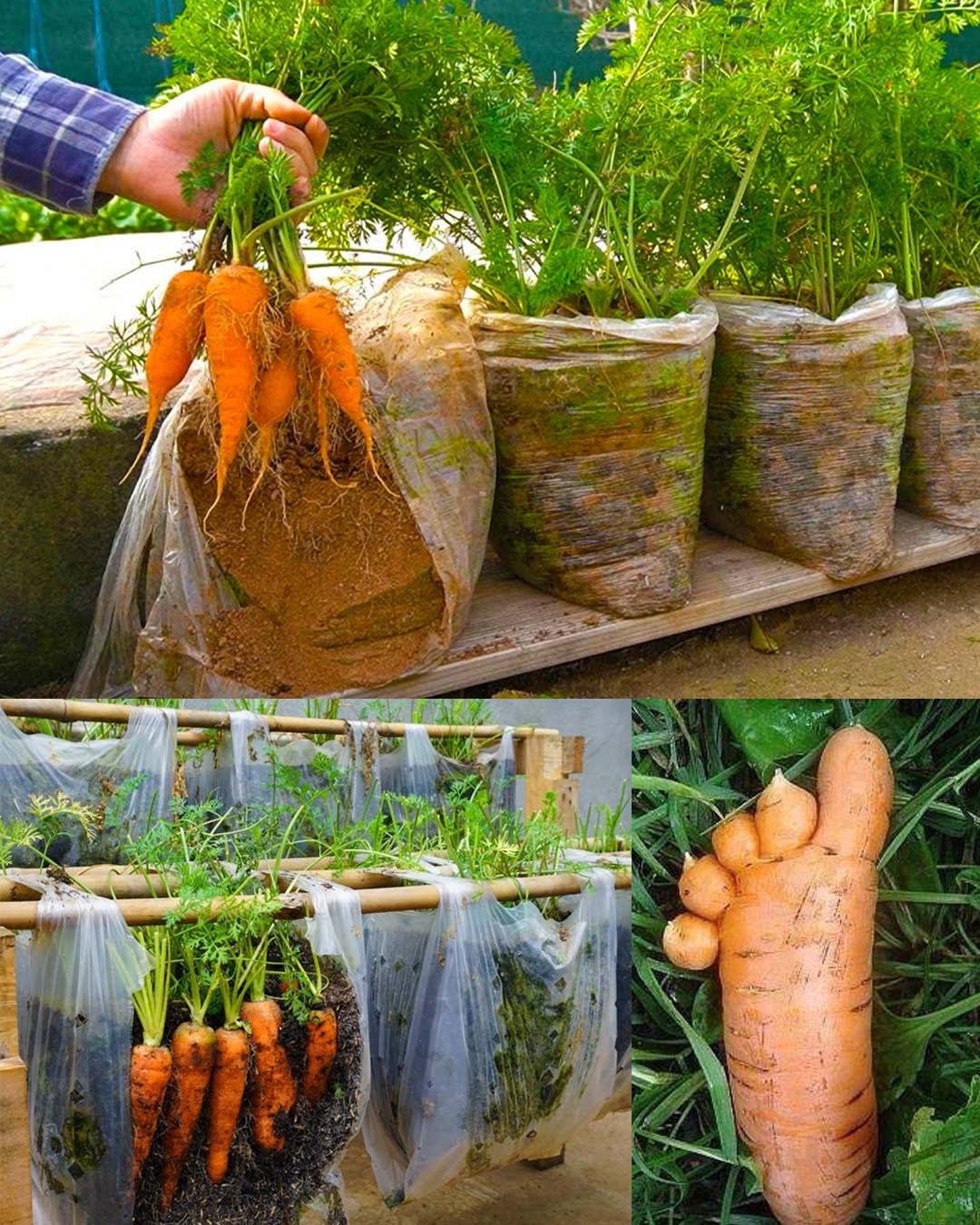Gardening enthusiasts know that there’s nothing quite like the thrill of harvesting a crop you’ve nurtured with your own two hands. Carrots, in particular, are a popular choice due to their nutritious value, delightful taste, and versatility in various dishes. But what if you could grow unusually fat, juicy carrots with a simple tool you likely already have at home: plastic bags? Read on to discover a unique method that has gardeners everywhere excited.
Why Grow Fat Carrots?
- Visual Appeal: There’s undeniable satisfaction in pulling out a chunky carrot from the soil. They’re simply impressive to look at.
- Taste and Texture: Bigger carrots tend to have a sweeter, juicier bite which can elevate many dishes.
- More Yield: Fat carrots mean more carrot flesh per root, which translates to a better harvest from a smaller patch.
Why Use Plastic Bags?
Before delving into the how-to, it’s essential to understand why plastic bags can be a game-changer for your carrot-growing endeavors.
- Consistent Moisture: Plastic bags help maintain a consistent moisture level, which is crucial for the growth of carrots.
- Temperature Control: They act as mini-greenhouses, retaining warmth and promoting faster growth.
- Pest Control: Bags can provide a barrier against certain soil-borne pests and diseases.
Getting Started: What You’ll Need
- Plastic Bags: These can be re-used grocery bags, provided they’re clean and free from holes. Clear bags are ideal as they allow for sunlight penetration.
- High-Quality Potting Mix: A fluffy, light, and nutrient-rich mix will promote better root growth.
- Carrot Seeds: Opt for varieties known for their larger size to maximize results.
- Water: For regular watering and maintaining moisture.
- Twist Ties or Rubber Bands: To seal the plastic bags.
- A Small Stick or Rod: For creating air holes.
Step-by-Step Guide to Growing Fat Carrots in Plastic Bags
1. Prepare the Plastic Bags:

Lay them flat, ensuring they’re clean and dry. If they’re not clear, consider cutting a large window on one side to let in sunlight.
2. Fill with Potting Mix:

Pour the soil into the bag until it’s about half to two-thirds full. You want to give the carrots ample space to grow without constraint.
3. Plant the Seeds:

Space your carrot seeds about 1-2 inches apart across the surface of the soil. Push them gently into the mix but don’t bury them too deep—around half an inch is sufficient.
4. Seal and Water:

Lightly water the seeds, ensuring the soil is moist but not waterlogged. Seal the bag using the twist ties or rubber bands, leaving a small opening for some airflow.
5. Create Air Holes:
Using the small stick or rod, poke a few holes in the bag’s top for ventilation. This ensures that your carrots get enough air and prevents mold growth.
6. Position Your Bags:
Place your plastic bags in a location where they’ll receive plenty of sunlight, ideally 6-8 hours a day. The bags should be laid flat to let the carrots grow downward naturally.
7. Regularly Monitor and Water:

Check on your carrots every few days. The soil should always remain moist, so water lightly as needed. The plastic bag retains moisture, so you’ll likely water less than you think.
8. Harvest Time:

Depending on the carrot variety, in 2-3 months, you should have fully grown, fat carrots. You’ll see their tops protruding from the soil, indicating they’re ready for harvest.
Additional Tips for Success
- Rotate Bags: Every couple of weeks, gently turn the bags to ensure even growth, as sometimes the sun can favor one side.
- Fertilize if Needed: If you notice your carrots are growing slower than expected, consider a mild liquid fertilizer.
- Avoid Overcrowding: Ensure seeds are spaced appropriately. Overcrowded carrots can stunt each other’s growth.
Environmental Consideration: Sustainable Practices
Given the increasing environmental concerns about single-use plastics, it’s essential to adopt sustainable practices. Reuse bags as many times as possible and opt for biodegradable or recyclable alternatives where available.
Growing fat carrots in plastic bags is an innovative method that promises impressive results. Not only is this approach efficient and space-saving, but it also provides a unique way to repurpose plastic bags. By following this guide, gardeners of all levels can enjoy the rewards of their very own, homegrown fat carrots. Happy gardening!

